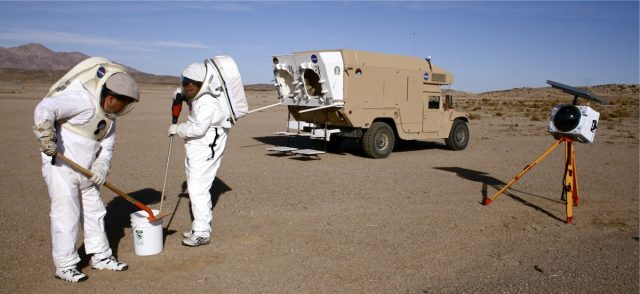Simulated trip to Mars left crew with sleep, exercise problems
Ars Technica » Scientific Method 2013-01-08

Regardless how you feel about the manned space program, it's difficult to argue with the logic that motivated one of the more unusual experiments we've ever reported on. Given that we're almost certain to send a manned mission to Mars before the end of the century, the Russian Academy of Sciences organized a six-person crew to perform a simulation of a 520-day mission to Mars.
During the simulated mission, which ran from June 3, 2010 until November 4, 2011, the crew was given plenty of things to do near the launch and landing, and period of heavy activity in the middle of the "trip," where they simulated landing on Mars and collecting samples. But, in between, they were allowed to set their own schedule and adjust their lighting and activity to their own tastes. As you might expect, this generally didn't work out well; the test subjects gradually became sedentary, and many had problems holding to a steady sleep schedule. The most striking thing, however, is that they generally adopted different sleep schedules, leaving one of the crew having a "day" that was an hour longer than the rest, and another napping mid-day.
The people running the simulation went out of their way to make things as accurate as they could. The long list of factors that they added included "a spaceship-like habitat; continuous isolation from Earth’s environment; realistic mission activities; a mid-mission landing on a simulated Mars surface; accurate mission duration and timeline; operations between crew and mission controllers; communication delays inherent in interplanetary travel; limited consumable resources; exercise equipment for physical fitness; diurnal weekly work schedule; crew control of habitat lighting; and video monitoring of crew in habitat common areas." Note the delay in communications—that could range anywhere from a low of a few minutes to over 20.
Read 8 remaining paragraphs | Comments